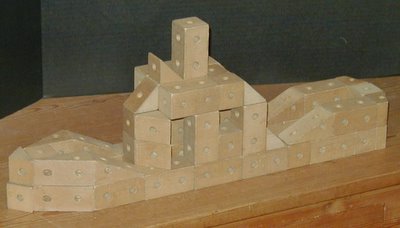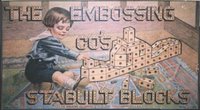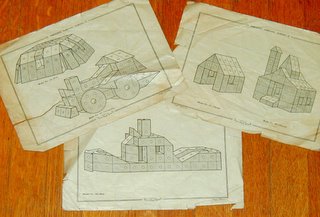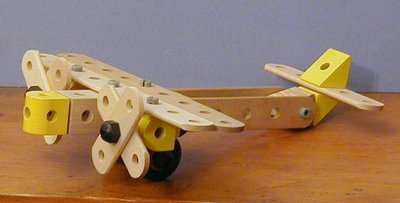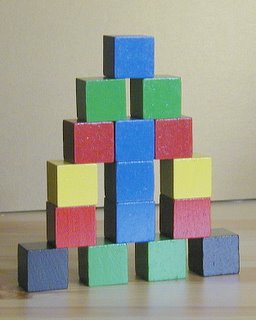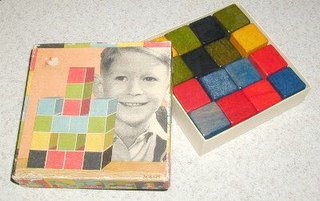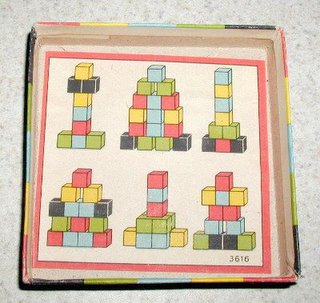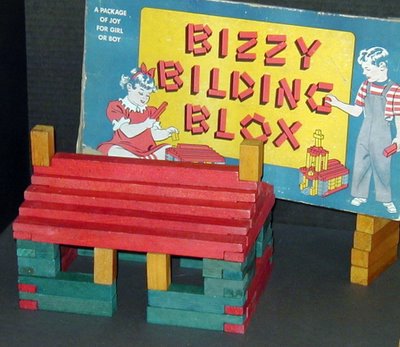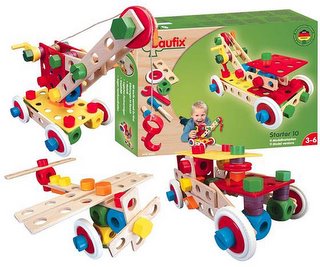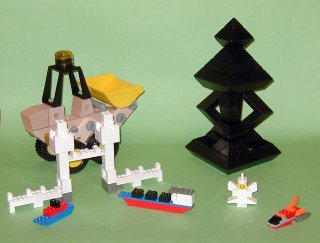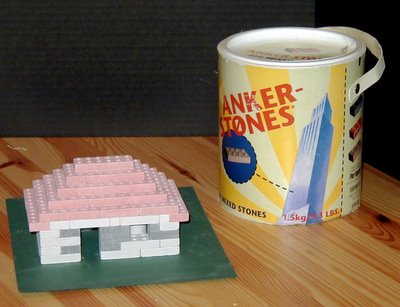 "Reliable Easylock" bricks are the Canadian version of "American Bricks," which went through many versions in the United States, and were the Lego-counterpart of my childhood.
"Reliable Easylock" bricks are the Canadian version of "American Bricks," which went through many versions in the United States, and were the Lego-counterpart of my childhood.
In one of those eBay surprises, the instruction sheet with several sample structures was hidden under the bricks, and the bricks turned out to be apparently a complete set or nearly so, in reasonably good shape. Certainly there are enough bricks to build anything pictured for the smaller set on the plan sheet, and there may be enough to build structures intended for the medium set.

The cardstock roof pieces were missing, but a substitute was quickly created, and original American Brick roof pieces are typically unusable due to warping and battered edges anyway -- presumably the same would apply to Reliable Easylock cardstock roofs.
Good Block Play.


